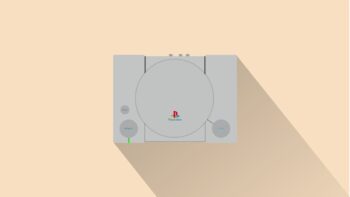Not only was the PlayStation 2 and its direct competitor, the XBox, the turn of the twenty-first century heralded the rapid growth of mobile gaming. By the beginning of the 2000s, Sony was already paving the way for the development of the game industry by combining all the achievements of previous years in innovative projects such as MGS and Silent Hill, which helped to grab a 35% share of the console market in Japan. Sony’s global market share in 1999 was 66%. On 31 January 2001 Sega announced that production of the Dreamcast would cease in March, while 50 games of the 60 in development would still be released. So the Nintendo Wii and subsequent consoles were already aiming for a different audience than Sony. The concept of a console for children and the whole family came back to life.

Gaming of West Europe
Funding and opening of branches in Eastern Europe began. Even the famous GSC Game World was developing S.T.A.L.K.E.R. with the support of THQ. It so happened that most of the games were created in Russia and Ukraine. While the former grew on localizations, and the latter more on their own developments. “Anabiosis: Mind’s Dream (2008) developed by the Ukrainian company Action Forms. The mixture of horror and shooter received high marks not only in the CIS. The legendary Space Rangers (2002) has combined elements of RPG, turn-based strategy, quest and arcade. A series of tactical strategies Blitzkrieg (2003) and Behind Enemy Lines (2004), followed by the sequel Black Jackets (2009), both about the Second World War. I would especially like to highlight Turgor: Voice of Colour (2008), a survival adventure/RPG. It was awarded as “The Most Unconventional Project” at the 2007 GDC. But there were also straightforward moves on the way to success, such as Xenus (2005) and Xenus 2: White Gold (2008), Pirate Hunter. Somali Trap” (2009) and other “our answers”, which included a very distinctive counterpart to the Hitman series, “Death to Spies” (2007).
The post-Soviet and Eastern European gaming industry has come a long way from a basement and semi-legal existence, standing on the shoulders of enthusiasts, to a multi-billion dollar (in rubles of course) industry. In the early 2000s, many even felt empowered to perform on an equal footing with the West. But, there is always a “but”. These initiatives crashed against the wall of reality. There was a lot of money flowing into the industry, but there was no experience in developing such large-scale projects. Most of the ambitious projects turned into long-built projects, proving to be far from foreign ones. All the more so as high-quality imports stifled development of the domestic market. This could not prevent the emergence of a number of distinctive and world-class quality projects.
By the beginning of the 21st century, WE game industries began to disappear. Globalization brought them under a single standard, and that standard was American. Many RPGs rely on the American D&D system; Finnish Max Payne borrows its genre, setting, visual style; the Czechs with their Mafia took the same path, wishing to capture the US market. Remember Call of Juarez, Operation Flashpoint, Vietcong and others. Success in the USA was expected to bring in massive profits, equal to success in the rest of the world. Games exploited themes, aesthetics and artworks close to the main market. The industry has developed a Western cultural commonality that has been a brake on the penetration of the same Xbox 360 and many hits like Call of Duty in Japan. The US has a cult of guns, which is where all the shooters came from, which in Japan are completely uninteresting. In the West, the source of inspiration was primarily films. This determined the departure into realism and attempts to achieve photorealism in games. In Japan, the backbone of the industry has always been the manga and local animation, and that allows for hypertrophied proportions in visual style.
The gaming situation in Asian
The situation looked different in China, which for a long time was closed to both American and Japanese corporations. In the 1990s, its own industry developed very slowly, even, more accurately, did not develop at all. And the level of piracy was very similar to Russia. Similarly, you could buy pirated NES clones and cartridges. The first serious changes took place only in the 2000s, with the rapid development of technology and the Internet, from which there was no hiding anymore, with all the desire. For fear of losing control over the flow of information, consoles were banned in China in 2000.
But at the same time, under state supervision, a nationally oriented game industry and the creation of an internet space began to emerge. Only 0.8 per cent of the population had internet access. In 2003 70% of the games for the Chinese market were produced in South Korea. For example, The Legend of Mir II, that was the most popular game in 2004. But in 2005 Chinese game industry was ready to take the offensive. By 2006, Chinese makers had captured 64.8 percent of the market and launched 218 games, an increase of 26 games over 2005. The domestic market in 2006 was valued at $529 million, an increase of 87.4% over 2005. At the same time, China surpassed South Korea as the largest market for online games.
Since about 2006 to 2007, more than 100 outsourcing companies started to open in China that develop graphics and other things. For example, most of the textures for Test Drive: Unlimited were drawn in China. Chinese workers are several times cheaper and work just as hard. In 2007, there were already about 150 national companies in China, more than 100 development centres and 30 marketing companies and publishers distributing both Chinese and foreign games. And in only 5 years the income from Chinese games has grown from $1.8 bln to $7.8 bln and the total revenue has grown from $3 bln to $13 bln.
Already in 2006, 90% of players preferred online games. And of course the high level of piracy contributes to this. It should be noted that 70% of internet users in China are under 30 years old and the Chinese youth mostly had no money for consoles and games back then, with the internet being one of the cheapest in the world. Even when the consoles were launched in 2013 they were not a success with 500,000 copies of PS4 and Xbox One sold in 2 years. Although the market is growing at $2-3 billion a year and in 2017 it reached $12 billion. Most Chinese gamers are simply not familiar with Western culture, and they are in no hurry to get familiar with it. William Ding founder of NetEase characterises the situation this way: “To the Chinese, games of their own design are like tea and a foreign product is like coffee.”
Chinese games differ primarily because they are based on Chinese culture and are primarily aimed at the domestic consumer. Fantasy Westward Journey, for example, is based on 16th century Chinese culture. Games have become a cornerstone of technology development in China. For example, Baidu, China’s largest search engine, has set up its own online game development business. Very quickly, internet companies such as Tencent and Alibaba followed suit. Under the watchful eye of the Chinese government, a tight-knit chain of developers, publishers and retailers has been formed in the games industry.
Korea owes much to Japan. The only thing is that prior to 1987, Korea did not have any copyright laws. This law was adopted by the pressure of the United States to protect the corporations. So, all through 1980’s, the flow of pirated games didn’t stop. Especially Japanese games, and not US or European games were pirated. Anti-Japanese sentiment in society contributed to this. After all, Korea suffered from Japanese imperialism and colonial oppression in the first half of the 20th century. This was expressed in the following formula: “Since these are Japanese games, it is more patriotic to copy them than to spread them honestly.” This allowed for the development of in-house production with minimum effort and many companies simply went legit.
The artisanal method of production inevitably became a thing of the past with the arrival of big money. And in 1993 the first university opened for developers. It was also when local corporations began to localize games (before that everything was in Japanese or English). The almost total absence of Japanese RPGs since 1994 provided a niche for the Korean product which, with the rise of the Internet, has become more and more like an MMO. Still, the Korean market remained too small and could only ensure success for a few hits. Not least because of the high level of piracy. According to PC World magazine, less than 20% of gamers in the 1990s were using licensed products. Appeals to patriotism were unable to solve the problem. Korea has been aided by China, whose market has recently opened up to all comers. One of the first MMORPGs, Nexus: The Kingdom of the Winds, was published in 1996 by Jack Song and quickly amassed more than 1 million subscribers. His next game was already released in 1998 and was called Lineage, garnering millions of fans not only in Korea but also in Taiwan.
In 1994 Samsung brought the Sega Saturn to Korea, but barely managed to sell 2,000 consoles in the first months, and by the end of 1995 the milestone of 20,000 was squeaked out. And it cost a whopping 550,000 won – the most expensive console in Korean history. In 1997 Nintendo’s N64 could only be found in a couple of shops, while the PlayStation One didn’t go on sale at all. Sony alone managed to sell 1,000,000 PlayStation 2 by 2004. During the economic crisis in 1997, when many citizens could not afford to buy games, there were famous “PC bangs” – an analogue of our computer clubs with elements of Internet cafes, where you could play your favorite MMO for 1-1,5 dollars per hour. Until the end of 2001 the PC bangs were the main source of income for the publishers. Incidentally, in those years, high-speed Internet was not available to everyone. Subscription-based and free-to-play client games were the first to gather a large audience. In Korea, as before, the problem of piracy was acute and the free-to-play model could significantly reduce this damage. Microtransactions have become a lifesaver for publishers.
MMORPGs and other online games created a lot of opportunities to earn extra money. They were constantly shown on TV, sponsors were found for organizing tournaments and advertising their products. It was much more convenient to work with local developers. All the more so when a wide variety of generations were drawn into the industry with the increased focus on knowledge intensive manufacturing and the IT sphere, which pulled in the development of the Internet. Out of a population of 50 million, more than half are into video games.


